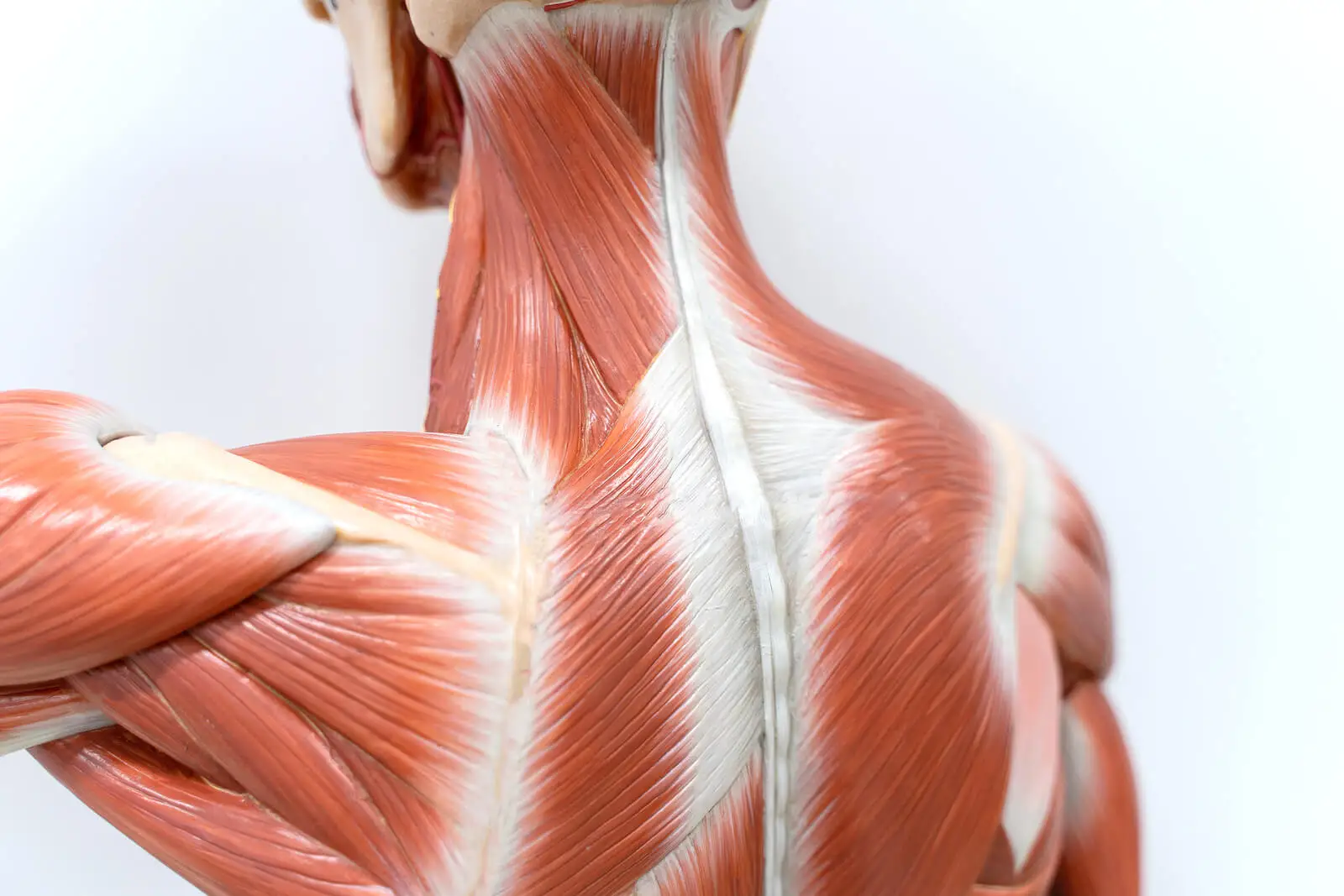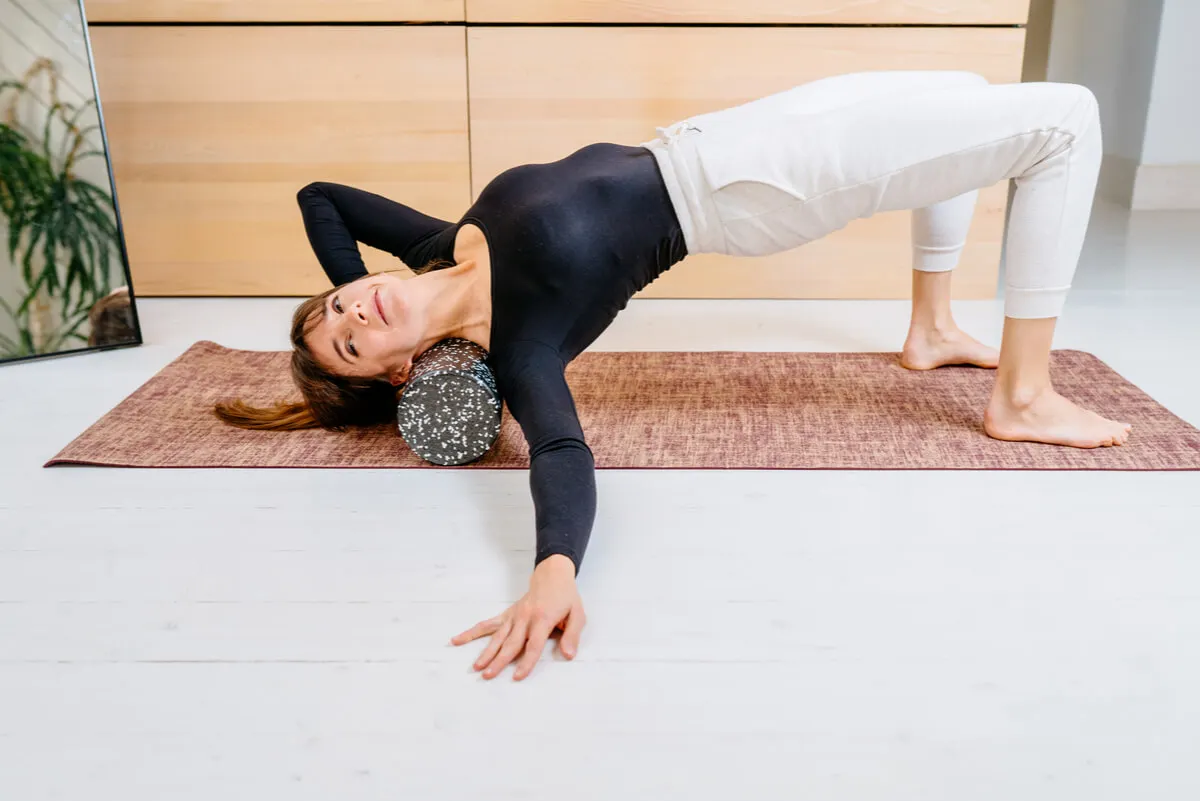Myofascial Release: What Does it Consist of and What are its Benefits?


Reviewed and approved by the nurse Leidy Mora Molina
Myofascial release can help to relieve pain after an injury. It’s based on manual massages that stimulate the affected area and help to promote the movement of muscle fascia under the skin.
It’s also known as myofascial induction and is applied by physiotherapists or massage therapists to recover the functionality of the tissues. It directly affects the locomotor system and extends to the rest of the body, thus relieving discomfort through pressure and stretching.
What is myofascial release?
Before explaining the technique, it’s necessary to know what a fascia is. This is the tissue that surrounds the muscles, nerves, blood vessels, lymphatics, and viscera, in addition to connecting organs allowing the biomechanical activity.
According to an article published in the Cuban Journal of Biomedical Research, myofascial release facilitates mobility, cellular circulation, and tissue elasticity in the face of spasms due to stress, injuries, and inactivity. This leads to pain points that, if not treated, could be chronic.
In view of this diagnosis, specialists often appeal to myofascial release treatments since they mechanically activate the tissue to release tension and soothe discomfort, both in the specific area and in remote areas.
The pressures are sustained and light, and they usually include stretching and movement. The goal is to remove functional restrictions by stimulating collagen and its related properties.

We think you may be interested in reading this, too: How to Make a Good Homemade Face Mask to Clean Your Pores
Parts of the body that can be treated with the technique
Myofascial induction can help to manage the numbness of parts that remain fixed for a long time or that we use frequently, such as the head, jaw, neck, quadriceps, arms, back, hips, feet, and calves.
Many joint or muscle pains are the result of injuries and the hustle and bustle or the rhythm of life. Similarly, they’re also associated with physiological movements that go unnoticed, such as lung expansion when we breathe.
It’s often used to treat fibromyalgia, low back pain, migraines, tendonitis, post-traumatic and post-surgical scars, stiffness due to neurological disorders, whiplash, and chronic prostatitis. In any case, it’s not a first-line approach. It should always be a therapeutic complement to the specific medical prescription.
The benefits of myofascial release
The greatest benefit is the optimal mobility of the body due to the relaxation of certain trigger points. The technique keeps the body in good condition; there’s better circulation, and toxins are eliminated via the lymphatic ducts.
Other benefits of myofascial release are as follows:
- It completely relaxes the body.
- The locomotor system recovers its functionality.
- It relieves discomfort from conditions such as rheumatoid arthritis, lupus, and scleroderma.
- Balances the musculoskeletal system.
- It expands your range of motion.
- It minimizes tension and stress.
Also, in the case of fascial release treatments, the relief is global. For this reason, it’s often used as a complement for sports warm-ups together with the technique of foam roller. It’s also offered in physiotherapy rooms.
Like this article? You may also like to read: Why Wash Your Face With Apple Cider Vinegar? Know the Benefits
Contraindications of myofascial release
Before the sessions, the expert evaluates the patient to determine the exercises. However, not everyone is a candidate for this treatment.
It’s contraindicated in those who take anticoagulants or suffer from metabolic conditions, fractures, aneurysms, and osteoporosis. It’s also not used if there are open wounds, burns, fever, infectious diseases, or in the case of pregnancy.
In addition to physical therapy centers, myofascial release can be performed at home with simple methods, always guided by a knowledgeable practitioner. Although there are online tutorials, the right thing to do is to have a professional perform the treatment.
How is a session done?
The sessions do not exceed 1 hour and consist of the steps explained below:
- Assessment: This is a static and dynamic test of the patient to verify the state of the fascial system and specify the alterations.
- Warm-up: With their fingers, palms, and elbows the physiotherapist, massage therapist, or chiropractor prepares the fascia.
- Stretching: These are long, soft, and sustained manual movements that stretch and release the fascia without forcing it.
The techniques are superficial or deep. The former include J-slides that increase the movement of the skin, transverse slides to the fibers, and longitudinal slides made with the fingers, elbows, or knuckles.
On the other hand, the deep ones are exercised in transverse planes, with crossed hands, and in a craniosacral direction – that is to say, from the head to the feet.

What you should keep in mind about myofascial release
Myofascial induction is more effective when combined with neurodynamics, osteopathy, and global postural reeducation. Your physiotherapist will know which ones are the most suitable for your condition.
Also, make sure to set the number of sessions according to the tension of the fascia, pain, and trigger points. The most frequent is once a week and 6 in total. Each treatment lasts 1 hour, but if the pain is extreme, it is possible to reach 3 hours.
For greater effectiveness, it’s advisable to drink plenty of water. Likewise, remember that tension or pain is not only caused by injuries; emotions, stress, and wear and tear can also be treated with this method.
This is not an aesthetic treatment, much less a massage to shape the figure. Whoever applies it must have the knowledge and carry it out in specialized clinics.
All cited sources were thoroughly reviewed by our team to ensure their quality, reliability, currency, and validity. The bibliography of this article was considered reliable and of academic or scientific accuracy.
- Capote G, Rendón P, Analuiza E, Guerrero E, Cáceres C, Gibert, A. Efectos de la autoliberación miofascial. Revisión sistemática. Revista Cubana Investigaciones Biomédicas. Vol.36, Nº 2. Ciudad de la Habana; 2017. http://scielo.sld.cu/scielo.php?script=sci_arttext&pid=S0864-03002017000200025
- Morla Guaman, Shirley Marilen. Tratamiento de ciatalgia mediante la implementación de la neurodinamia. BS thesis. Quito: UCE, 2019.
- González H. (2019). Variaciones biomecánicas del cuádriceps, en futbolistas, tras la aplicación de masaje con «Foam Roller». Trabajo Fin de Máster Universitario en Biomecánica y Fisioterapia Deportiva. Universidad Pontificia. Escuela de Enfermería y Fisioterapia San Juan de Dios. Madrid. https://repositorio.comillas.edu/xmlui/bitstream/handle/11531/42468/PFM000191.pdf?sequence=1&isAllowed=y
- Villares, E. Técnicas Básicas en Liberación Miofascial. Universidad de Málaga; 2017. https://riuma.uma.es/xmlui/handle/10630/12811
- Martínez, L. Eficacia de la manipulación miofascial en la fibromialgia. Trabajo de Suficiencia Profesional. Universidad Inca Garcilaso De La Vega. Perú; 2018. http://repositorio.uigv.edu.pe/bitstream/handle/20.500.11818/3991/TRAB.SUF.PROF_MARTINEZ%20LOLI%2C%20Alessandra.pdf?sequence=2&isAllowed=y
This text is provided for informational purposes only and does not replace consultation with a professional. If in doubt, consult your specialist.








